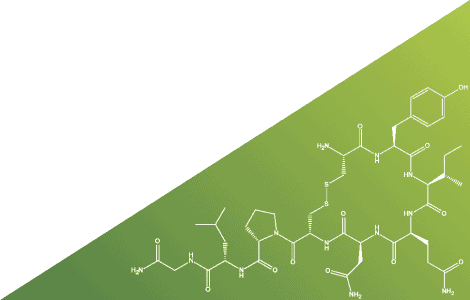What Are Enzymes? Classification and Evolution of Enzymes


Introduction
Enzymes are remarkable biological molecules that catalyze biochemical reactions, enabling life as we know it. Found in every cell of living organisms, enzymes are primarily proteins, and they act as catalysts, speeding up reactions without being consumed in the process. In this post, we’ll explore the classification of enzymes, the different types of enzymes, their structure, and how they have evolved over time to support complex life processes.
What Are Enzymes?
In biochemistry, enzymes are proteins that accelerate chemical reactions by lowering the activation energy required for the reaction to occur. Every enzyme has a unique structure that allows it to interact with specific substrates, the molecules they act on. This interaction typically happens at the active site, a specially shaped region of the enzyme that binds to the substrate, facilitating the conversion into products. Without enzymes, many of the biochemical reactions in our bodies would happen too slowly to sustain life.
Types of Enzymes
Enzymes are classified based on the reactions they catalyze. The main types of enzymes include:
- Oxidoreductases – These enzymes catalyze oxidation-reduction reactions, where electrons are transferred between molecules.
- Transferases – These enzymes transfer functional groups (like methyl or phosphate groups) from one molecule to another.
- Hydrolases – Enzymes that break bonds using water, such as breaking down large molecules like proteins and carbohydrates.
- Lyases – These enzymes break chemical bonds by mechanisms other than hydrolysis or oxidation. Lyases often introduce double bonds into the molecules they act upon.
- Isomerases – These enzymes rearrange atoms within a molecule, converting it into an isomer (same molecular formula, but different structure).
- Ligases – Enzymes that join two molecules together, often using energy from ATP, such as in DNA replication.
Each type is crucial for different metabolic and cellular processes.
Classification of Enzymes with Examples
Enzymes can be categorized using the IUB classification of enzymes system, which divides them into six broad classes. Here’s a breakdown with examples:
- Oxidoreductases: These enzymes catalyze reactions where electrons are transferred. Example: Lactate dehydrogenase, which converts lactate into pyruvate.
- Transferases: These enzymes transfer functional groups from one molecule to another. Example: Alanine aminotransferase, which transfers an amino group from alanine to another molecule.
- Hydrolases: Enzymes that use water to break bonds. Example: Amylase, which breaks down starch into sugar molecules.
- Lyases: These enzymes break bonds, often without the use of water or oxidation, and frequently introduce double bonds. Example: Aldolase, which is involved in glycolysis.
- Isomerases: These enzymes rearrange molecules into their isomer forms. Example: Glucose-6-phosphate isomerase, which helps convert glucose into fructose.
- Ligases: Enzymes that bond two molecules together. Example: DNA ligase, which seals DNA strands during replication.
This classification helps scientists understand the specific functions of enzymes and how they support life processes.
Nomenclature and Classification of Enzymes
The nomenclature and classification of enzymes follow a system that allows researchers to name enzymes based on the type of reaction they catalyze. This naming system helps to standardize enzyme identification across scientific disciplines. Typically, enzyme names end in “-ase,” indicating their catalytic role. For example, lipase breaks down lipids, while amylase breaks down starch. Enzymes are also classified with a unique number that reflects their specific function. This number includes the enzyme’s class, subclass, and specific function, making it easier to identify and study enzymes.
Classes of Enzymes and Their Functions
The major classes of enzymes serve specific purposes in biochemical reactions. Let’s take a closer look at Lyases, which are responsible for breaking bonds by non-hydrolytic means, often introducing double bonds. For example, Aldolase in the glycolysis pathway is a lyase enzyme that helps break down glucose while introducing double bonds in the process. Lyases are essential for many metabolic reactions, including those involved in energy production.
Enzyme Structure and Function
An enzyme’s structure is fundamental to its function. Each enzyme is made of a unique sequence of amino acids that fold into a specific three-dimensional shape. This shape is crucial because it forms the active site, where the substrate binds. The fit between the enzyme and substrate is highly specific, much like a lock and key. This specificity ensures that only certain molecules can interact with the enzyme. In addition to the active site, enzymes may also contain cofactors, such as metal ions or vitamins, that help with the catalytic process. A small change in an enzyme’s structure can have significant effects on its function, which is why maintaining the integrity of enzyme structures is so important for cellular health.
Evolution of Enzymes
The evolution of enzymes is a fascinating subject. Over time, enzymes have become more efficient and specialized, allowing organisms to perform a wide variety of biochemical reactions. The diversity of enzyme types and their adaptations to specific environments (e.g., extreme heat, acidity, or salinity) is a testament to the role of enzymes in survival. For instance, enzymes found in extremophiles have adapted to withstand extreme conditions, such as high temperatures or low pH levels. Gene duplication and mutation have also allowed enzymes to evolve new functions or become more efficient at existing ones.
Conclusion
In conclusion, enzymes are integral to nearly every biological process in living organisms. Their classification into types like oxidoreductases, transferases, and lyases helps scientists understand their specific roles. The IUB classification of enzymes provides a detailed system for categorizing these proteins, while the nomenclature and classification of enzymes ensure clarity and consistency in research. The evolution of enzymes is a fascinating area of study, showing how these molecular machines have adapted to the needs of life on Earth. Whether it’s digesting food or repairing DNA, enzymes are indispensable to life.

